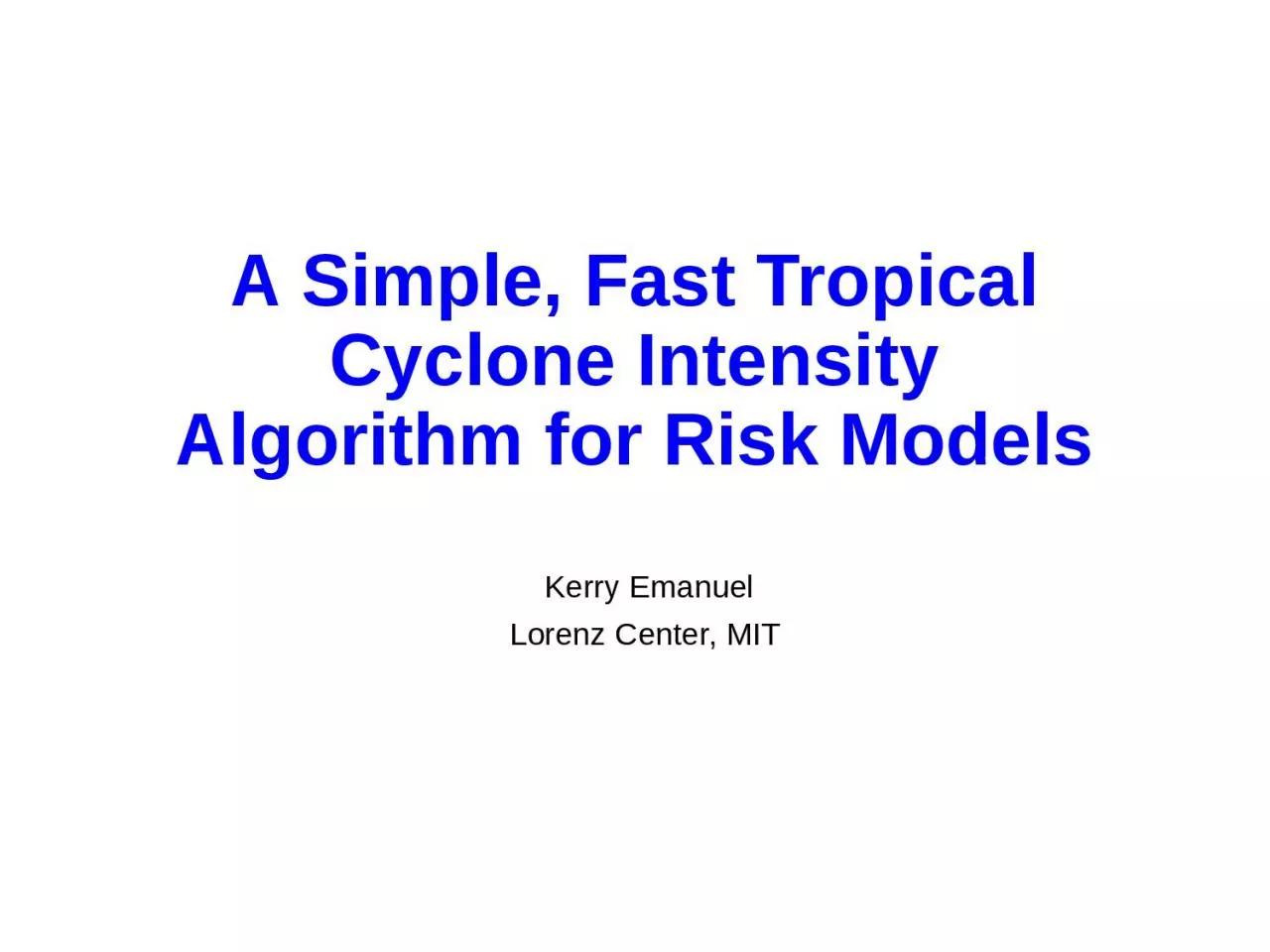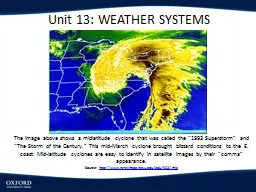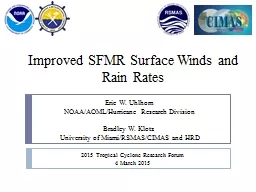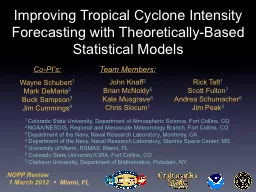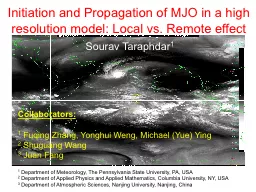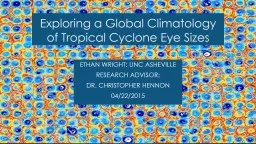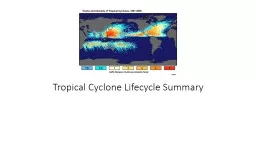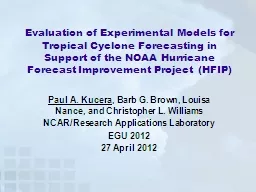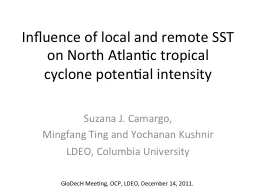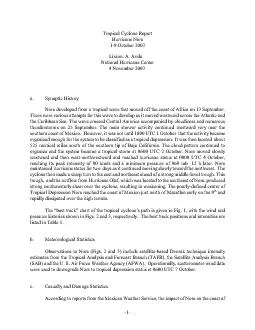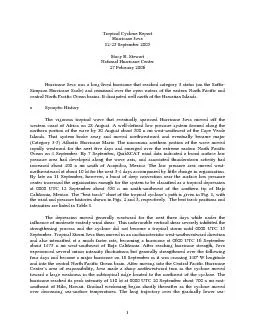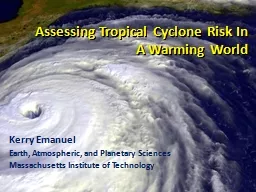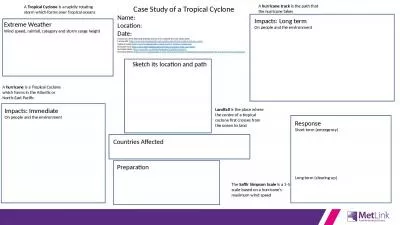PPT-A Simple, Fast Tropical Cyclone Intensity Algorithm for Risk Models
Author : finley | Published Date : 2023-06-23
Kerry Emanuel Lorenz Center MIT Motivations Most current TC risk models are based on statistical algorithms for generating synthetic tracks and associated wind
Presentation Embed Code
Download Presentation
Download Presentation The PPT/PDF document "A Simple, Fast Tropical Cyclone Intensit..." is the property of its rightful owner. Permission is granted to download and print the materials on this website for personal, non-commercial use only, and to display it on your personal computer provided you do not modify the materials and that you retain all copyright notices contained in the materials. By downloading content from our website, you accept the terms of this agreement.
A Simple, Fast Tropical Cyclone Intensity Algorithm for Risk Models: Transcript
Download Rules Of Document
"A Simple, Fast Tropical Cyclone Intensity Algorithm for Risk Models"The content belongs to its owner. You may download and print it for personal use, without modification, and keep all copyright notices. By downloading, you agree to these terms.
Related Documents

